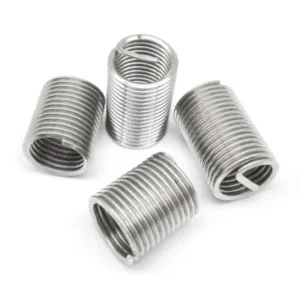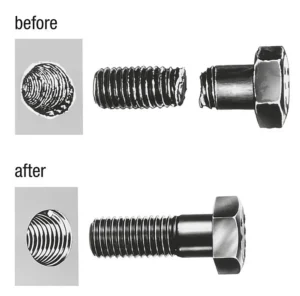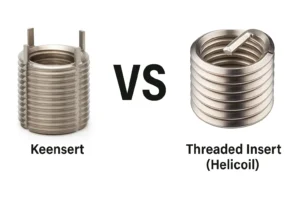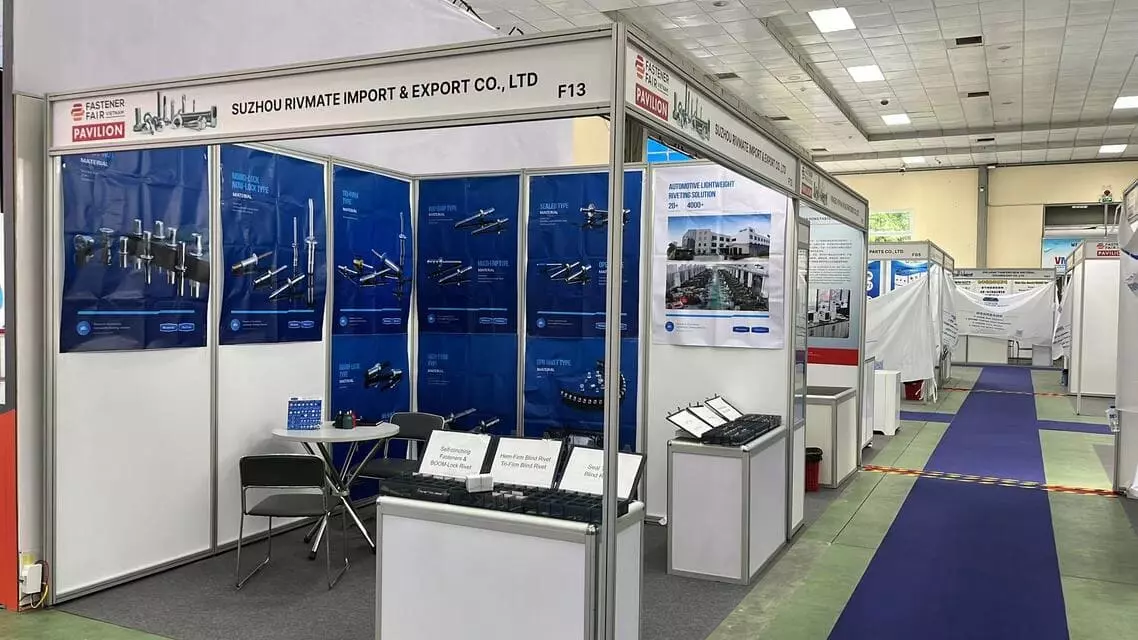Are Jack Nuts Resuable?
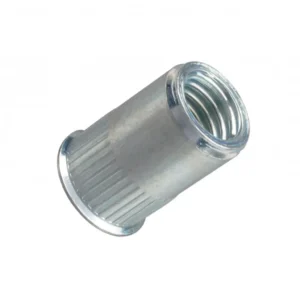
Leading Rivet Nut Manufacturer and Supplier in China

When choosing a fastening solution for thin-walled materials or hollow structures, the Jack nut is widely used in automotive, household appliances and light industrial structures due to its convenient installation and strong expansion clamping force. However, during actual maintenance or repeated assembly processes, many users will ask a core question: “Are Jack Nuts Resuable?“
The answer is: It is usually not recommended to reuse.
This is because the fixation principle of the Jack nut relies on the plastic deformation of the metal or plastic body during installation. Once the locking deformation is formed, the structural integrity and clamping performance of the nut are difficult to restore after disassembly. Moreover, repeated use may lead to thread failure, fatigue in the expansion zone, and even structural loosening, thereby affecting the overall connection strength and safety.
In this article, we will further elaborate on its working mechanism, the criteria for determining its reusability, as well as alternative solutions suitable for reusability scenarios, to assist you in making reliable decisions during the design and maintenance phases.
Table of Contents
What Are Jack Nuts and How Do They Work?

The “Jack Nut” is a type of expansion fastener specifically designed for thin-walled materials or hollow structural components. It is widely used in metal plates, plastic parts, and composite materials. It is suitable for situations where tapping or welding cannot be performed.
Structure and Working Principle:
The Jack nut is usually composed of a four-lobed expansion foot and a hollow nut body with internal threads. The installation steps are as follows:
- Insert the nut into the pre-drilled through hole;
- Tighten it inward with the screw to cause the internal structure to deform under force;
- The expanding feet spread outward and clamp onto the back of the sheet, achieving “backside clamping fixation”;
- Finally, a structure connection similar to “anchoring” is formed.
Feature: Installation does not require back support or welding. It can be operated from only one side and is suitable for post-installation scenarios.
Table: Comparison of Common Fasteners
| Type | Installation Method | Reusable | Application Scenarios |
|---|---|---|---|
| Jack Nut | Screw tightening → Legs expand and anchor | No | Thin panels, plastic parts, maintenance openings |
| Rivet Nut | Riveting tool → Deformation locking | No | Thin metal sheets, high-strength threaded joints |
| Cage Nut | Clips into edge hole → Screw clamps it | Yes | Panels, vehicle interiors, electronic enclosures |
The Jack nut has slightly weaker clamping force compared to the rivet nut, but it has the advantage of being more flexible during installation. It is particularly suitable for situations where the installation space is limited and the backside cannot be accessed. However, since it relies on structural deformation for clamping, the structure cannot be restored after installation, which is the fundamental reason why it is not reusable.
Can Jack Nuts Be Removed Without Damage?
During actual maintenance or product repair processes, it is often necessary to remove the installed Jack nuts. However, because they rely on the permanent deformation of the expansion structure for fixation, Jack nuts usually do not meet the condition of ‘non-destructive removal’.
a. Why are Jack nuts difficult to be removed without damaging them?
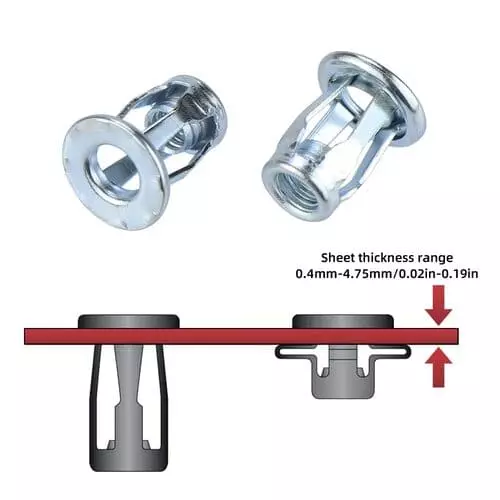
When installing the Jack nut, it is pulled inward through the screw, causing the bottom four-part structure to spread outward and closely adhere to the back of the substrate, forming a “mechanical lock”. This process involves significant “plastic deformation”, and therefore, when attempting to reverse this process, the following problems arise:
- The expansion feet cannot be restored: The metal expansion feet have been permanently bent and cannot be returned to their original shape;
- The base material holes are prone to damage: During forced pulling, the expansion area rubs against the edge of the hole, which may enlarge the hole diameter or tear the sheet;
- The internal threads are prone to stripping: Repeated twisting may damage the internal threads, causing them to fail.
b. Is there a "relatively low-loss" disassembly method?
Although it is impossible to achieve a truly “damage-free disassembly”, the following methods can be adopted to reduce the degree of damage in order to facilitate repair or replacement:
Method 1: Cut or drill out from the inside
- Use a special hole drilling tool or a screw column cutting tool to cut through the expansion structure;
- For aluminum or plastic Jack nuts, a reverse spiral drill can be used in conjunction with a low torque to slowly drill out.
Method 2: Use a puller or a hammering tool
- Screw the screw into the internal thread of the Jack nut;
- Use the slide hammer type extraction tool to provide axial impact force and forcibly pull out;
- Suitable for thick plates or situations where back stretching is allowed.
Method 3: Remove from the Back (If Accessible)
- If it can be operated from the back of the structure, the folded part can be flattened using a cutting knife or grinding wheel;
- Be careful to avoid damaging the surface of the base material or the surrounding components.
c. Theoretical and Practical Suggestions
The failure mode study indicates that the expansion structure failure load of the Jack nut is usually less than 80% of its pull-out limit. Therefore, the local shear method is more controllable than forced pulling. If the product structure permits, the replaceable design should be considered during the design stage (such as detachable panels + replaceable nuts). For applications requiring long-term maintenance (such as military equipment, electrical control cabinets, etc.), it is recommended to use removable rivet nuts or threaded sleeve products.
Factors Affecting Jack Nut Reusability
①. Material Fatigue and Creep Deformation
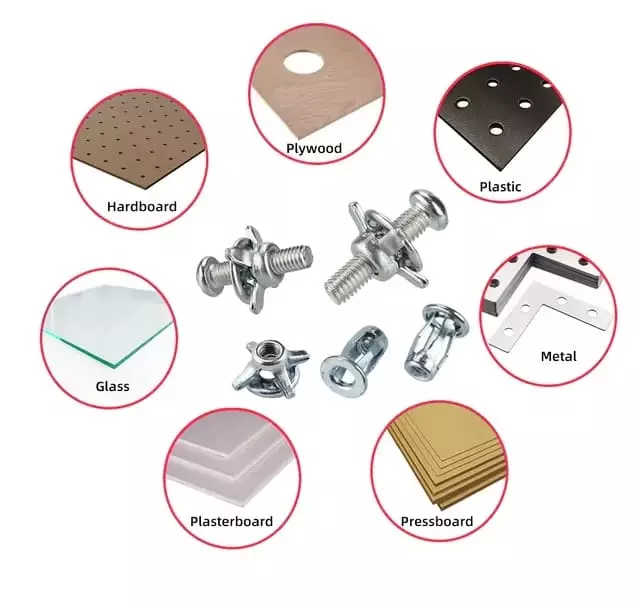
The common materials for Jack nuts are zinc alloy, aluminum alloy or plastic (nylon). These materials are prone to fatigue failure when subjected to repeated loading or torque applications:
- Zinc alloy: Has a low tensile strength (approximately 150 – 250 MPa), and does not have the ability to recover elasticity after yielding;
- Aluminum alloy: Although lighter, it has limited heat resistance and fatigue life;
- Plastic material: Under long-term clamping, it is prone to creep, reducing the clamping force, and has a high failure risk after repeated use.
The threaded detachment rate of the aluminum Jack nuts reached over 40% after being reassembled three times, and the clamping force decreased by an average of 25%.
②. The plastic deformation of the expanded structure is irreversible
The expansion fixation of the Jack nut is achieved by the four flaps at its bottom folding to clamp the backside of the substrate. This process is an irreversible plastic deformation with a one-time molding characteristic:
- After disassembly, the deformed structure is difficult to restore, and it cannot provide effective clamping when reused;
- If it is used again forcibly, “false clamping” may occur – the appearance is tight but there is no actual locking force.
After repeated installation, the expansion wing was in a semi-open state when not under force, which led to rotation loosening and even falling after installation.
③. Number of Installations and Degradation of Clamping Stability
Each time Jack nuts are installed, they will cause microscopic slip and accumulation of metal fatigue:
- Repeated installations will lead to a decrease in the accuracy of the thread engagement;
- Improper control of the installation torque (such as over-tightening) will accelerate the failure;
- The hole positions of the sheet material may also expand due to repeated expansion, further weakening the locking effect of the structure.
In the technical documents of most manufacturers, it is clearly stated that “The Jack nuts are one-time installation products” and reassembly after disassembly is not recommended.
General Recommendation:
| Application Type | Reuse Recommended | Reason |
|---|---|---|
| Temporary assembly for repair | ❌ Not Recommended | Irreversible material deformation, high risk of failure |
| Low-load indoor connection | ⚠️ Conditional Use | If plastic material and very light load, can be experimentally verified |
| Structural load-bearing parts | ❌ Prohibited | Safety-critical, must be installed as a one-time fastener |
Conclusion: The Jack nut design is fundamentally a one-time use structure, and repeated installation may pose significant structural risks and does not comply with the safety standards of most industrial products. If there is a need for repeated assembly, a more suitable alternative solution should be considered during the initial selection process, such as threaded inserts, rivet nuts, or metal clamping nuts, etc.
When Should You Replace a Jack Nut?
The nuts show signs of rotation loosening or decreased clamping force
The Jack nut is clamped onto the back of the sheet metal through an expansion structure. If any of the following situations occur during use, it should be replaced immediately:
- When tightening the screw, the nut rotates along with it;
- After use, the connection piece becomes loose and there is a shaking sensation;
- The expansion part on the back no longer fits with the hole wall, creating a gap.
These problems usually indicate an internal structural failure, and continued use will result in a complete disconnection of the connection.
Thread slippage, damage or poor meshing
Repeated assembly, over-tightening or material fatigue may cause damage to the internal threads of the Jack nut, manifested as:
- Uneven resistance when tightening the screw or inability to fully tighten it;
- Feeling of “slippage” when manually turning;
- The bolt can move freely in and out, without a sense of threaded locking.
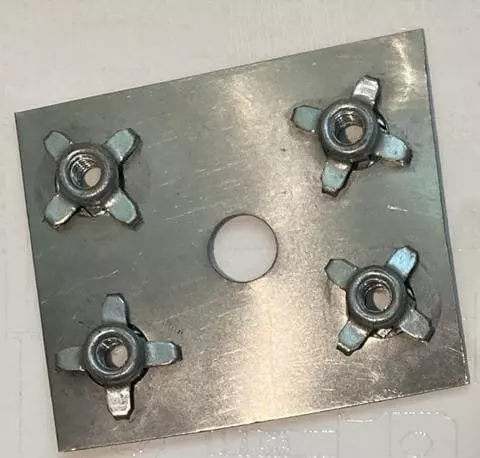
Obvious structural deformation or corrosion
- The structure has deformed and the edges have lifted or broken;
- The surface of the nuts is severely corroded, with metal powdering or oxidation flaking off;
- There are deformation marks on the installation holes, making it impossible to maintain a vertical installation state.
Corrosion and structural deformation are common in outdoor, humid or environments with chemical gases, and they affect the mechanical properties of the nuts.
For use in situations involving vibration or repeated stress
Even if the appearance is intact, Jack nuts that have been used in the following high-stress environments are recommended to be replaced:
- Continuous vibration applications such as vehicle chassis, elevators, motor housings, etc.;
- Exposed to periodic loads (such as door hinge connections);
- There have been cases of overload or emergency braking.
The reason is that the expansion structure of the Jack nut has a relatively short fatigue life, making it difficult to ensure the clamping force under multiple loads.
Recommended Maintenance Strategy:
| Inspection Interval | Recommended Action |
|---|---|
| Before each disassembly | Check thread integrity and clamping condition |
| Annual inspection | Focus on areas subjected to frequent vibration |
| Removed jack nuts | Replace all, do not reuse |
Alternatives to Jack Nuts for Reusable Applications
A. Threaded Inserts / Helicoil
Applicable: For occasions where high-strength and repeatable threaded connections are required in metal or plastic substrates
Typical models: Spiral thread sleeves, riveted thread sleeves, hot-melt thread sleeves.
Advantages:
- High wear resistance threads, suitable for frequent tightening;
- Repair or enhance the strength of the base material threads;
- Available in multiple materials (stainless steel, brass);

Application scenarios:
- Plastic housings, aluminum alloy panels, repair holes structures, etc.;
B. Weld Nuts
Applicable: Weldable steel structures, suitable for high-strength and long-term installation scenarios
Application Scenarios: Industrial equipment, steel boxes, frame structures, etc.
Advantages:
- Permanent installation, high tensile strength;
- Can be used multiple times after welding, good stability;
Limitations:
- Requires double-sided operation and a welding environment;
C. Locking nuts (Cage Nuts / Spring Nuts)
Applicable: For situations where the sheet metal structure can be freely replaced and repaired.
Advantages:
- Can be freely installed and removed in the holes, with flexible adaptability;
- Suitable for sheet materials with inconsistent thickness or without a fixed clamping range;
Typical Applications:
- Internal supports for server cabinets, enclosures, and toolboxes.
Table: Alternatives to Jack Nuts
| Fastener Type | Reusability | Installation/Replacement Ease | Maintenance Recommendation |
|---|---|---|---|
| Jack Nut | ❌ Not recommended | Medium | One-time use, not reusable |
| Threaded Insert | ✅ High | Moderate | Reusable 5–10 times or more |
| Weld Nut | ✅ High | Requires professional welding | Rarely needs replacement |
| Cage/Spring Nut | ✅ High | High (no tools required) | Periodic inspection for spring fatigue |
In engineering projects where factors such as maintenance costs, structural lifespan and safety considerations need to be taken into account, fasteners with high repeatability and high clamping stability should be given priority. Jack nuts should only be used in scenarios with low loads, temporary installations or those where it is difficult to access the backside.
Expert Recommendation: One-Time Use or Reuse?

The manufacturer's technical specifications clearly stipulate
Most major fastener manufacturers (such as AVK, STANLEY, Southco, Sherex) clearly state in their product data sheets or technical specifications:
“Jack Nuts are designed for one-time installation. Reuse is not recommended due to permanent deformation during setting.”
- Excerpted from the Sherex® Fastening Solutions product manual
Furthermore, although standards such as ASTM F2282 and GB/T 26763 do not explicitly prohibit reuse, all testing methods default to using completely new samples for performance verification, indirectly indicating that they are one-time structural components.
Summary of Engineering Experience: Irreversible Structure, Uncontrollable Performance
From the perspective of practical usage experience, the Jack nuts have the following unavoidable problems:
- The expansion structure undergoes irreversible deformation: Reuse will no longer provide the original clamping force;
- There is a risk of wear on the threads and the base material holes: Reuse will reduce the reliability of the connection;
- Once rotation loosening occurs, the structure completely fails: It cannot be re-fixed after removal.
The actual measurement results show that even if the Jack nuts are reinstalled in the same material after being removed, their tensile strength decreases by approximately 30% and their torsional strength drops by more than 50%.
Conclusion: Choose Reliability Over Risk
In the design of structural connections, safety and reliability should always take precedence over short-term cost savings. The Jack nut, as a typical expansion-type fastener, has a structural principle that determines that once installed, irreversible deformation occurs. After disassembly, the original clamping force and locking performance cannot be restored.
From the manufacturer’s technical specifications to on-site engineering practices, it is clearly stated that: The Jack nut is designed for single-use and does not have the structural reliability for repeated use. Forced reuse will not only weaken the connection strength but may also cause structural loosening, thread failure, and even safety accidents at critical parts. Therefore, in any application involving load-bearing, vibration, or high maintenance frequency, it is recommended to choose alternative fastening solutions that can be reused (such as nuts with sleeves, welded nuts, detachable riveted nuts, etc.). During the structural design phase, clearly define the “non-reusable component” attribute.
Do You Have Any Questions?
Let Us Solve Your Problem
FAQs About Jack Nut Usage and Replacement
Q1: Can Jack nuts be used on plastic substrates?
Answer: Yes, but the strength and thickness of the substrate need to be evaluated. The Jack nuts can be used for hard plastic plates (such as ABS, PC, POM, etc.), but please ensure:
- The thickness of the sheet should be ≥ 1.5mm to prevent puncturing or cracking during the expansion process;
- Use aluminum or nylon material for the Jack nuts to reduce stress concentration;
- Conduct pull-out tests to verify whether the clamping strength meets the design requirements.
Q2: Are there any Jack nut models that do not require special tools?
Answer: Yes. Some small-sized Jack nuts (such as M3 – M5) can be installed manually and do not require pneumatic/hydraulic tools:
- By using a combination of ordinary screws, nuts and washers, you can simulate the installation tension;
- There are also “screw tightening kits” available on the market for easy operation.
Suitable for maintenance, small-scale or temporary assembly, but still it is necessary to pay attention to the control of installation torque to prevent over-tightening and damage to the structure.
Q3: How can we determine that the Jack nut has become ineffective?
Answer: The following situations indicate that the Jack nuts are no longer usable and need to be replaced immediately:
- When tightening the screws, there is a noticeable slipping or the thread engagement is not smooth;
- During the tightening process, the nut rotates along with the screw;
- There are cracks, warping or obvious corrosion on the edge or expansion area of the nut;
- After assembly, the connection component shows phenomena such as loosening, noise or displacement.
Why Choose Rivetfix Jack Nuts – Reliable Performance from a Trusted Brand

When it comes to the challenge of structural connection, choosing the right fastener means choosing safety and efficiency. Rivetfix, as a professional brand specializing in industrial-grade fastening solutions, offers Jack nuts that not only pass multiple international quality certifications (ISO/ROHS), but also outperform most similar products in the market in terms of pulling force, clamping stability, and batch consistency.
We offer various specifications (M3 – M8) and multiple materials (aluminum, zinc alloy, stainless steel), meeting your application needs in different scenarios such as automobiles, electronics, electrical enclosures, and equipment maintenance. Each Rivetfix Jack nut has been rigorously selected and tested to ensure both installation efficiency and structural safety.
If you are seeking reliability, compatibility and excellent value for money, Rivetfix will be your reliable partner.
Please feel free to contact us to obtain samples, technical support or bulk purchase discount quotations.
Get High Quality Rivet Nuts Quote!
Send Your Rivet Nut Request
For more than 20 years, Rivetfix has helped customers solve many rivet nuts sourcing needs and technical challenges.
Have a question? Contact us and we’ll provide you with the perfect solution.

